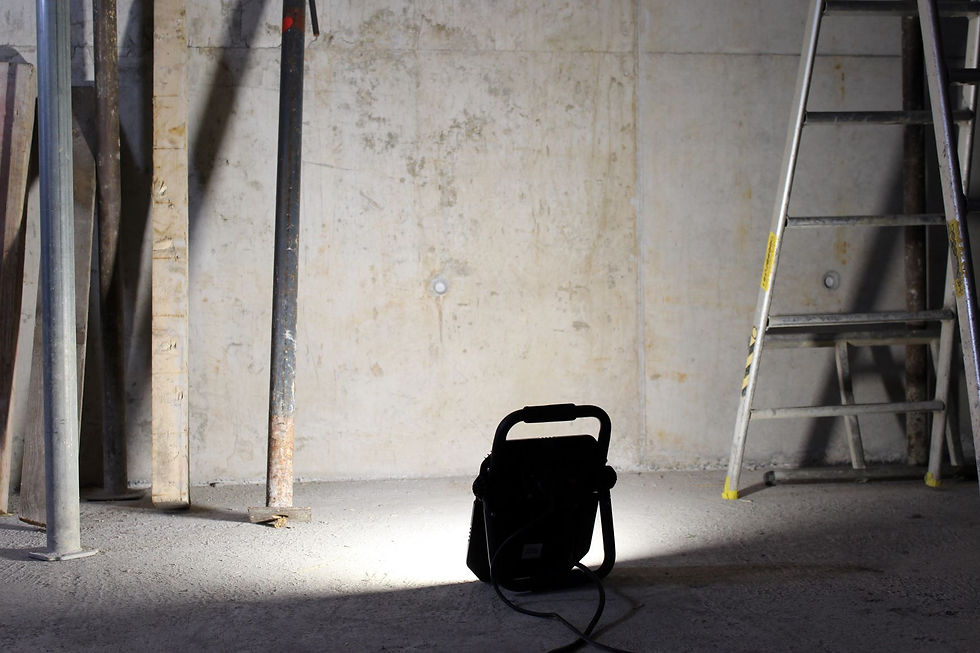
Light for interior work




Construction light is not construction light ...
Due to the versatile application areas of construction lights, it is important to use the advantages of LEDs in a targeted manner. It's not just robustness and stability that are decisive, luminosity, color rendering and color temperature also play a decisive role depending on the application.
Requirements for the construction lights in interior work
-
Which IP protection?
In interior work, the construction spotlight should be specially protected against dirt and dust. Moisture is less of a problem. For this reason, an IP protection of IP54 is recommended for most applications. (see IP protection classes)
PS: Good IP protection also enables easier cleaning.
-
Plastic or glass pane?
Plastic is a good alternative depending on the job. A plastic emitter is usually robust and not sensitive to impacts. The glare-free, diffuse light of a plastic pane can also be advantageous if the spotlight is in direct eye contact. A transparent pane of glass lets more light through and is resistant to solvents (cleaning!).
PS: The glass pane of a quality heater can be exchanged.
-
Diffuse or Transparent?
When working with a spotlight in the direct field of vision, diffuse light is recommended. However, since up to 25% of the light power can be lost, there is also glazing with a prismatic diffuser, which reduces glare from the side and hardly loses light power. (see art. 4086 SECTOR 50W IP65 / 4087 SECTOR 150W IP65 )
Only transparent glazing reproduces the maximum light output.
-
Lens technology
In order to generate the most powerful and uniform light possible, a spotlight with lens technology is recommended. The reduced light angle combined with the lens project an extremely clear and homogeneous light. This is of interest for precise surface work, but can be dazzling with direct light contact.
(see Art. 2044 SLIM POWER 10W / 2045 SLIM POWER 20W / 2041 HIGHLIGHT 60W )
-
Color temperature Kelvin (K)
A basic distinction is made between warm white (<3,300 K), neutral white (3,300 to 5,300 K) and daylight white (> 5,300 K).
Originally, most LED construction lights were at 6500K or even 7000K. It felt as if you achieved a lot of glaring, dazzling light. This caused confusion, especially when switching from halogen spotlights to LEDs.
-
Painters, plasterers, upholsterers, tilers or joiners therefore prefer 4000K to 5000K. This provides a neutral light and has no "halogen yellow light". Combined with good color rendering, the basis for precise and speedy work.
(see art. 4085 SECTOR 50W / 4086 SECTOR 50W IP65 / 4087 SECTOR 150W IP65 / 4090 VISTA 100W )


-
Color rendering CRI / Ra> 80
CRI / Ra <60 tire the eyes, colors no longer come into their own. For this reason, a heater with CRI / Ra> 80 is recommended.
-
Stable when standing and versatile in handling (standing, hanging, mounted on a tripod)
A firm stand is probably the most important thing, because a fallen spotlight interrupts work every time. The option of preparation for tripod mounting can be of decisive advantage, especially with larger worklights for painters, plasterers, etc.
Hanging spotlights and stowable in the painter's kettle are another possible argument.
-
Integrated socket
In order to supplement the heater with an additional one, or simply to charge the batteries on site, an integrated socket can be very helpful. But be careful, this never replaces a cable reel and has no voltage protection. There is a risk that larger power consumers (vacuum cleaners, machines, etc.) will damage the heater's electronics. For this reason, it is advisable to only connect smaller power consumers.
PS: A socket reduces the IP protection and is therefore only suitable for indoor applications.





































